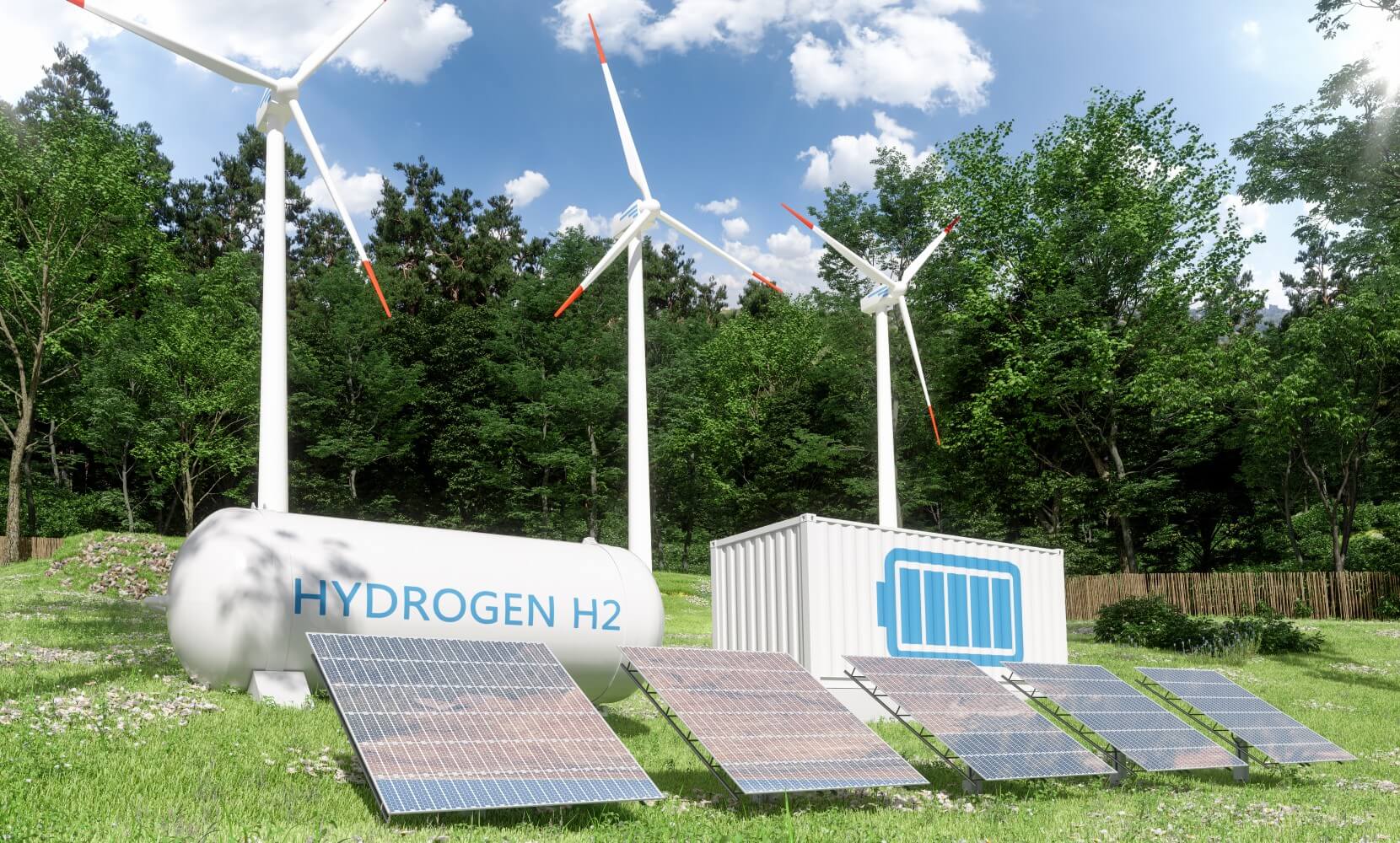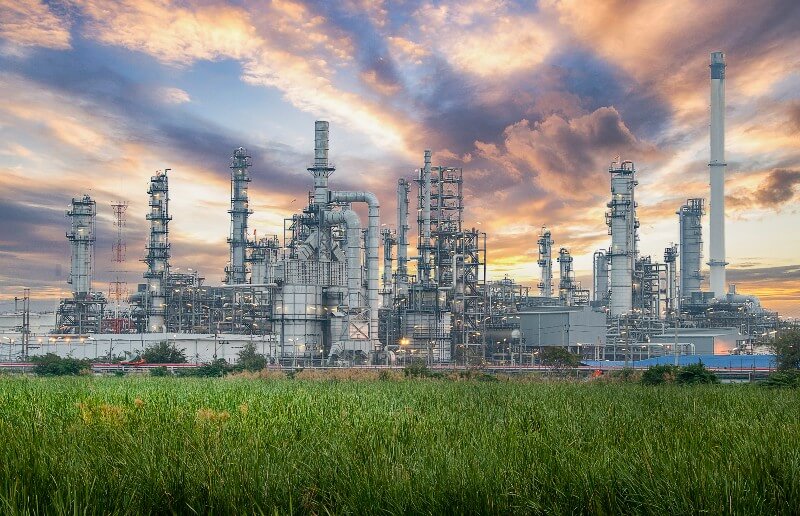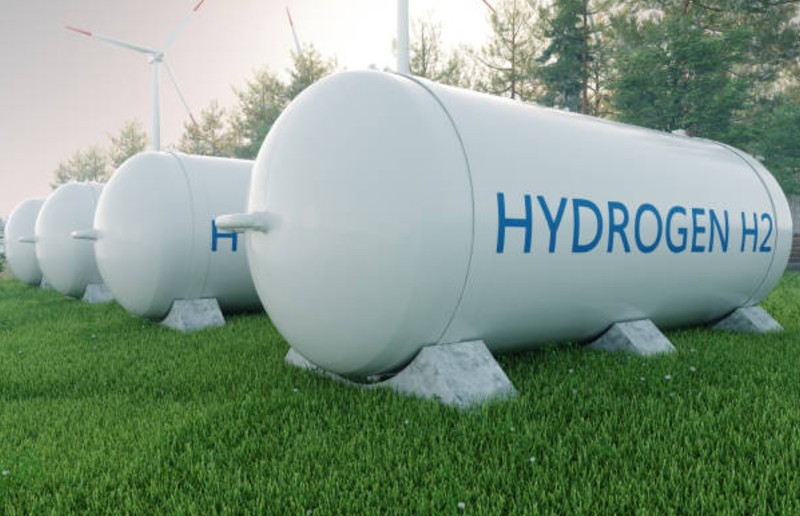These are different techniques in which a series of chemical reactions to obtain hydrogen are performed. The most widely used technique involves reforming natural gas from oil fields whereby high temperature water vapour is used to separate the carbon from the hydrogen that makes up the natural gas. Two successive reactions produce dihydrogen and carbon dioxide. This is the most widely used of all the methods available today.
Hydrogen is the most abundant chemical element on the planet; it is present in 75 % of matter. However, we never find it alone, but in the company of other chemical elements such as oxygen forming water or carbon forming organic compounds.
Humanity has long used it as a raw material in the chemical industry or metallurgy and as a fuel, but because it cannot be taken directly from nature in its pure state, it needs to “manufacture” it. And it is the very method that we use to obtain hydrogen that determines whether that hydrogen is a clean, sustainable fuel or not.
When we talk about green hydrogen, we mean hydrogen that has been obtained without generating pollutant emissions, i.e. sustainable hydrogen. A fuel that is already being presented as the key energy vector for achieving global decarbonisation and fulfilling the commitments made for 2050 in the fight against climate change.
Below we will explain why green hydrogen is so important to reduce greenhouse gases, how it is produced and what barriers it will have to overcome to become the fuel of the future.
- What is hydrogen and how do we get it?
- Types of hydrogen as a fuel
- What is green or renewable hydrogen and how does it work?
- What is green hydrogen used for? Uses to fight against climate change
- Advantages of using green hydrogen as a fuel
- Drawbacks of green hydrogen
- Green hydrogen for energy transition, why it’s so important
Green hydrogen explained in 2 minutes
What is hydrogen and how do we get it?
Hydrogen is the simplest chemical element, the first in the periodic table with atomic number 1. It is light, can be stored and does not generate pollutant emissions by itself.
With these characteristics, it is a perfect candidate for a fuel.
However, hydrogen is not a primary energy source but an energy vector, that is, it requires a chemical process to produce it.
You have probably heard that hydrogen is a renewable fuel, but this is not always true. Hydrogen is only renewable if the process used in its extraction is also renewable. Let's look at what forms of hydrogen production exist.
How is hydrogen obtained?
1. Molecular transformation
2. Gasification
Gasification with water vapour and pure oxygen is performed using coal or biomass. A reactor burns the coal or biomass at very high temperatures. In the combustion, gases are released which give rise to dihydrogen and carbon monoxide.
3. Water electrolysis:
This process involves breaking down the water molecule (H2O) into oxygen (O2) and hydrogen (H2) by a direct electrical current that is connected by electrodes to the water. When electrolysis is performed with renewable energy, this is the most sustainable method of production.
Types of hydrogen as a fuel
These methods of hydrogen production have resulted in a colour nomenclature that we use to refer to it and to how sustainable its extraction process has been. According to this colour scale, the main hydrogen types are:
Grey hydrogen
What is green or renewable hydrogen and how does it work?
As such, green hydrogen is that obtained through the use of renewable energies in its production, which makes it a clean, sustainable fuel with a zero pollution index that can be key not only as an energy vector, but as a raw material.
Its great value in the fight against climate change lies in its ability to replace fossil fuels in those sectors and uses that until now were more difficult to decarbonise, in addition to its potential as an energy storage system.
How is green hydrogen achieved?
Green hydrogen is achieved through a process of electrolysis powered by renewable energies such as wind or solar. Electrolysis involves using an electrical current to break down the water molecule into oxygen and hydrogen by electrodes.

How does green hydrogen work?
When we need to turn it into energy, hydrogen stored in specific tanks is channelled into a fuel cell. There it binds again with oxygen from the air and electricity is obtained. Thus, the only by-product of the process is water, resulting in a clean, sustainable system in which zero CO₂ is emitted to produce energy.
How does green hydrogen work?
When we need to turn it into energy, hydrogen stored in specific tanks is channelled into a fuel cell. There it binds again with oxygen from the air and electricity is obtained. Thus, the only by-product of the process is water, resulting in a clean, sustainable system in which zero CO₂ is emitted to produce energy.

Green hydrogen in heavy industry
Hydrogen is used as a raw material in the chemical industry to manufacture ammonia and fertilisers, in the petrochemical industry for petroleum refining and in metallurgy to obtain steel.
The use of hydrogen in these three industries produces a large amount of carbon dioxide emissions. For example, steel manufacturing accounts for 6 to 7 % of global CO₂ emissions, two to three times the emissions from all global aviation. We could use green hydrogen as a raw material and produce emissions-free steel, which would be a very important step towards the urgent decarbonisation of these industries.

Green hydrogen for energy storage
Green hydrogen can serve as an energy storage system thanks to its large volume and long life similar to the way in which we now use strategic oil or natural gas reserves. In so doing, we could supply reserves of renewable hydrogen to support the electricity grid.

Green hydrogen as a clean, renewable fuel
The use of green hydrogen as a fuel will be one of the keys in helping to decarbonise transport, especially long-haul and air transport.
Very cheap but highly polluting fuels are usually used in maritime transport, so green hydrogen offers a decisive alternative for long-haul vessels. In aviation, green hydrogen can be the basis for synthetic fuels that radically reduce emissions from this sector. It will also be essential for other means such as rail or heavy goods transport by road.

Green hydrogen in domestic use
Green hydrogen is capable of reaching temperatures that are difficult to achieve with other clean processes. That is why its use in electricity and heating for homes is one of the most promising applications of green hydrogen.
Benefits of using green hydrogen as a fuel
Green hydrogen will be one of the protagonists in the upcoming energy transition that global economies are obligated to lead to achieve carbon neutrality and combat climate change.
To this end, it will be of vital importance to eliminate emissions in those uses that are currently difficult to electrify, which is where green hydrogen claims its potential due to all of its inherent benefits:
- It is a clean energy: The only waste it generates is water.
- It is a renewable energy: It uses natural resources that are not exhausted.
- It is storable: Green hydrogen can be compressed and stored in ad hoc tanks for a long time.
- It is transportable: Because it is a very light element, compressed hydrogen tanks allow easier handling than lithium batteries because they are lighter, which facilitates transport as a result.
Barriers to green hydrogen
Despite all of these advantages, green hydrogen is not yet part of our energy mix because due to various difficulties that research, government policies and private investment have the challenge of overcoming:

- Green hydrogen is more expensive to produce than grey hydrogen. However, the fall in the price of renewable energies has opened a new window of opportunity for its cost to become increasingly competitive. Solar electricity is 10 times cheaper than it was a decade ago and wind energy costs less than half, making it possible for the electricity needed for the electrolysis process to be reduced in price.
- Its implementation requires significant investments. It is said that USD 300 billion will be needed in the next few years globally for infrastructure and research. But, according to a report by BloombergNEF (BNEF), with enough policies to support its development, demand for green hydrogen may increase to 700 million tonnes by 2050, so investment in its development is a cost, but also a huge financial opportunity.
Green hydrogen for the energy transition, why it's so important
There is increasing consensus that green hydrogen could be used in almost every sector that today depends on fossil fuels and is difficult to decarbonise.
That is why it is vital to promote it in order to achieve the climate commitments of the Paris Agreement and the zero-emission targets required by the climate emergency.
Initiatives throughout the hydrogen value chain are already being promoted in Europe, such as the manufacture of more competitive electrolysers, the construction of a transport network and the installation of hydrogeneration for road transport.
According to a report by the International Renewable Energy Agency (IRENA), the cost of hydrogen installations could decrease from 40 % to 80 % in the long term. This, coupled with lower renewable energy prices, suggests that green hydrogen could be profitable from 2030.
GENERATION OF GREEN HYDROGEN AT ACCIONA
ACCIONA works day by day on state-of-the-art energy solutions to advance towards the decarbonisation of the system. That is why it leads the renewable energy sector as the world's largest 100 % clean energy company.
As part of its activity, the company already has a project to generate green hydrogen from photovoltaic energy located on the island of Mallorca (Spain). The plant will generate and distribute more than 300 tonnes a year of H2, which will serve as fuel to public and commercial bus fleets, as well as an auxiliary power supply to ferries and port operations, preventing the emission into the atmosphere of 16,000 tonnes of CO2 per year.
GREEN HYDROGEN GENERATION AT ACCIONA
EXPERIENCE
Green hydrogen will it go down in history as a new revolution
ACCIONA Energía produces in Mallorca first industrial ecosystem renewable hydrogen on the european island.
Noticias de interés
Read the latest newsThe ACCIONA | SAINZ XE TEAM finishes third in the first Extreme E Prix Semi-Final
Carlos Sainz and Laia Sanz reached the fourth place in the Desert X Prix, which gives th...
ACCIONA and Plug Power to partner on establishing leading green hydrogen platform for the Iberian Peninsula
The joint-venture aims for a 20% market share in Spain and Portugal
ACCIONA and Enagás launch green hydrogen project in Mallorca
The partners have completed the purchase from Hydrogenics of an electrolyser that can produce 330...
ACCIONA is pioneering the application of Blockchain to emissions trading in an alliance with Climatetrade
The company is driving the development of the first purchase-and-sale platform for carbon rights ...
ACCIONA, Spain’s National heritage agency and PhotoESPAÑA join forces to promote photographic journey across Royal Sites’ natural Heritage
The selected photographer is Javier Vallhonrat, winner of Spain’s National Photography Prize (199...
José Manuel Entrecanales: “It is worrying that the US and Europe only install 20% of the world’s new renewable capacity”
"the major market economies are losing ground" in the global process of decarbonizing the economy...